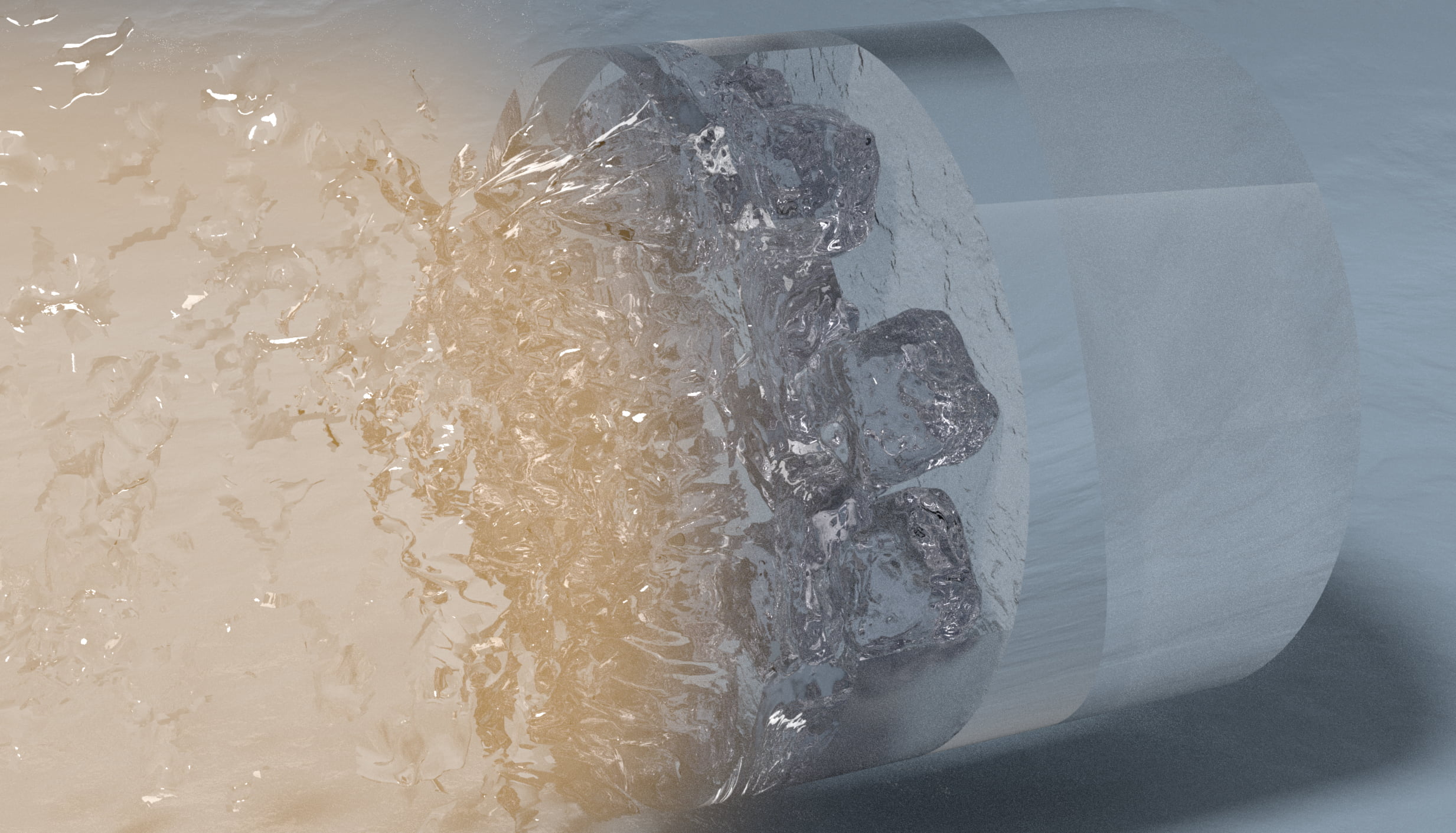Scientists have used one of the most powerful lasers in the world to flash-freeze water to create superionic ice which appears to be half as hot as the sun. The new research suggests it’s possible to make different forms of ice by utilizing various techniques.
Researchers from Lawrence Livermore National Laboratory (LLNL) used lasers to freeze water into its superionic phase and then used X-rays to identify its atomic structure. This is the first time researchers performed this experiment, which takes place in just a few billionths of a second, according to a new study published in the journal Nature.
The idea of water phasing into an exotic state consisting of a solid lattice of oxygen and hydrogen in a liquid-like state was first hypothesized in 1988. Scientists believed this phase occurred when the elements were exposed to the extreme pressures and temperatures inside Uranus and Neptune, which are rich with water. The predictions about this exotic state of ice lasted until 2018. That’s when LLNL researchers proved this bizarre state was possible by creating artificial ice.
Using lasers and in-situ X-ray diffraction, the team was able to create superionic ice. They observed the nucleation of a crystalline lattice of oxygen in a few billionths of a second, learning more about the microscopic structure of superionic ice in the process.
“We wanted to determine the atomic structure of superionic water,” LLNL physicist Federica Coppari said in a statement. “But given the extreme conditions at which this elusive state of matter is predicted to be stable, compressing water to such pressures and temperatures and simultaneously taking snapshots of the atomic structure was an extremely difficult task, which required an innovative experimental design.”
They performed the experiments at the Omega Laser Facility at the University of Rochester’s Laboratory for Laser Energetics (LLE.) The laser beams generated a shockwave sequence of increasing intensity which shrunk a thin layer of liquid water to pressures between 100 and 400 gigapascals, which is 1-4 million times Earth’s atmospheric pressure, and extreme temperatures between 3,000 and 5,000 degrees Fahrenheit.
“We designed the experiments to compress the water so that it would freeze into solid ice, but it was not certain that the ice crystals would actually form and grow in the few billionths of a second that we can hold the pressure-temperature conditions,” LLNL physicist Marius Millot said.
The team needed to document the process of crystallization necessary for sequencing the atomic structure of superionic ice, so they used iron foil with 16 additional laser pulses, which resulted in hot plasma. The hot plasma generated X-rays necessary to illuminate the compressed water sample.
“In the previous work we could only measure macroscopic properties such as internal energy and temperature,” Millot added. “Therefore, we designed a new and different experiment to document the atomic structure. Finding direct evidence for the existence of crystalline lattice of oxygen brings the last missing piece to the puzzle regarding the existence of superionic water ice. This gives additional strength to the evidence for the existence of superionic ice we collected last year.”





